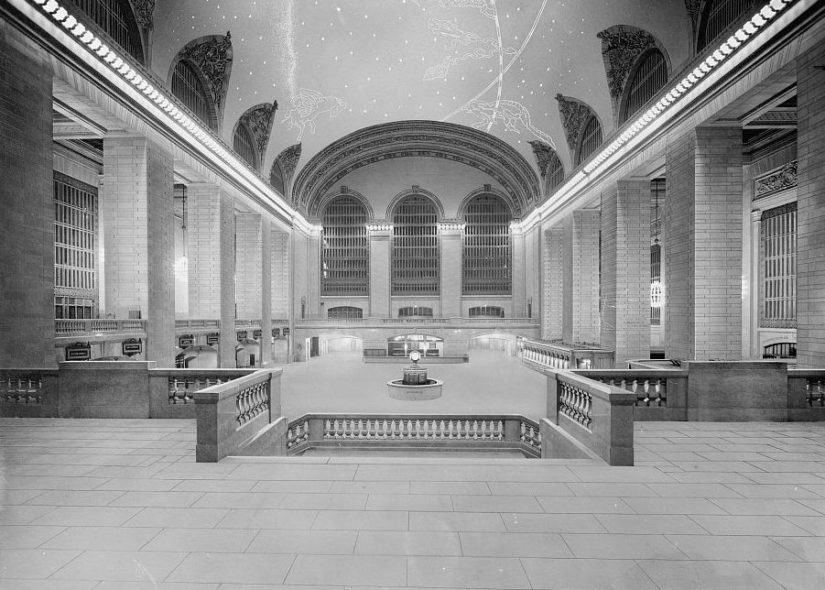
Norman Marcus
Norman Marcus was a city planner who helped draft the amendments to the zoning rules that allowed for the transfer of air rights, a key strategy in preserving structures in New York City.
Norman Marcus was born in the Bronx on August 31, 1932. He was the only child of David and Evelyn Freed Marcus. He graduated from Columbia University in 1953 and earned a law degree from Yale in 1957.1 During his time at Yale, he married Maria Lenhoff in 1956. They had two daughters, Valerie and Nicole, and one son, Eric.2
Marcus spent several years working in the private sector before he joined the New York City Department of City Planning in 1963 and served there for over 20 years.3
A true visionary and a proponent for mixed-income housing, Marcus made numerous legal contributions to urban planning in New York City. He was responsible for the development of inclusionary zoning, which offers tax breaks for developers who set aside a portion of the building to lower income tenants.4 Inclusionary zoning helped promote mixed-income neighborhoods in the city.
In 1982, Marcus helped draft the loft laws, which protected artists living in converted loft spaces from rising rents, poor conditions, and eviction.5 The lofts were typically converted from commercial and industrial buildings in areas such as SoHo, and used by certified artists as living and studio spaces.6
His influence on the preservation of historic buildings was reflected in several cases of transferring air rights in some of Manhattan’s historic neighborhoods. He was instrumental in the Penn Central Transportation Co. v. New York City Supreme Court case. His keen understanding of zoning laws and codes in regards to air rights and height helped prevent the construction of Marcel Breuer’s 55-story office tower above Grand Central Terminal.7
During the latter part of his life, he left the New York City Planning Commission to pursue a career as an educator. Marcus taught zoning law at New York University, the Cardozo School of Law, the Pratt Institute, and Princeton’s Architecture School.8 He also went into private practice. The Municipal Art Society cited Marcus for his “illustrious career using the art and craft of land-use law to shape a better New York.”9 Norman Marcus passed away on June 30, 2008. He was 75 years old.
New York City Planning Commission
General Counsel, 1963-1985
Norman Marcus's legacy in both urban planning and historic preservation helped facilitate key planning and zoning laws that help protect the historic integrity of several important neighborhoods.
One of the most prominent contributions Marcus made in the preservation movement was the protection of Grand Central Terminal. Along with the New York City Landmarks Preservation Commission, he argued in favor of transferring air rights above Grand Central Terminal to neighboring locations. The roots of this argument originated from a zoning law passed in 1961 allowing the transfer of unused air rights from one area to another.10 An amendment to this law, passed in 1968, permitted business owners to sell their unused air rights to neighboring businesses.11 Marcus, along with the Planning Commission, was responsible for drafting the language of these amendments, which eventually secured the protection of Grand Central Terminal. The amendments to the zoning law were presented in 1968.12
These amendments, however, did not mollify the Penn Central Railroad's eagerness to build above Grand Central Terminal, and they sued the City for the private protection of their unused air rights. The Grand Central case was eventually brought before the Supreme Court in 1978 in the case Penn Central Transportation Co. v. New York City. The ruling upheld that the transfer of air rights to nearby areas was legal and further established that the New York City Landmarks Law was constitutional.13
In addition, the logic behind the zoning amendments passed in the 1960s would be used again in the protection of the Theater District. While serving on the New York City Planning Commission, Marcus developed a plan to protect the Theater District by transferring air rights to other locations.14 This process allowed theater owners to sell their unused air rights to neighboring businesses while preserving the architectural character of the district.15 According to the New York Zoning Handbook, the zoning applied to this district also allows for "light and air" in the Midtown area.16 This was the first time these zoning laws were applied to protect a cohesive group of historic buildings as opposed to an individual landmark.
- Dennis Hevesi, “Norman Marcus, New York City Zoning Expert, Dies at 75,” The New York Times, 7 July 2008.
- Ibid.
- Ibid.
- Ibid.
- Ibid.
- Bret Senft, “If You’re Thinking of Living in: Soho,” The New York Times, 3 January 1993.
- David W. Dunlap, “Commercial Property: Grand Central Terminal; A New Look at a 1910 Proposal for Using Air Rights,” The New York Times, 23 September 1990.
- Dennis Hevesi, “Norman Marcus, New York City Zoning Expert, Dies at 75,” The New York Times, 7 July 2008.
- Ibid.
- Ibid.
- Ibid.
- Ibid.
- Ibid.
- Alan S. Oser, “Act I of a Zoning Drama in the Theater District,” The New York Times, 7 November 1982.
- Ibid.
- New York City Zoning Handbook: A Guide to New York City’s Zoning Resolution. The Department of City Planning, 2006.